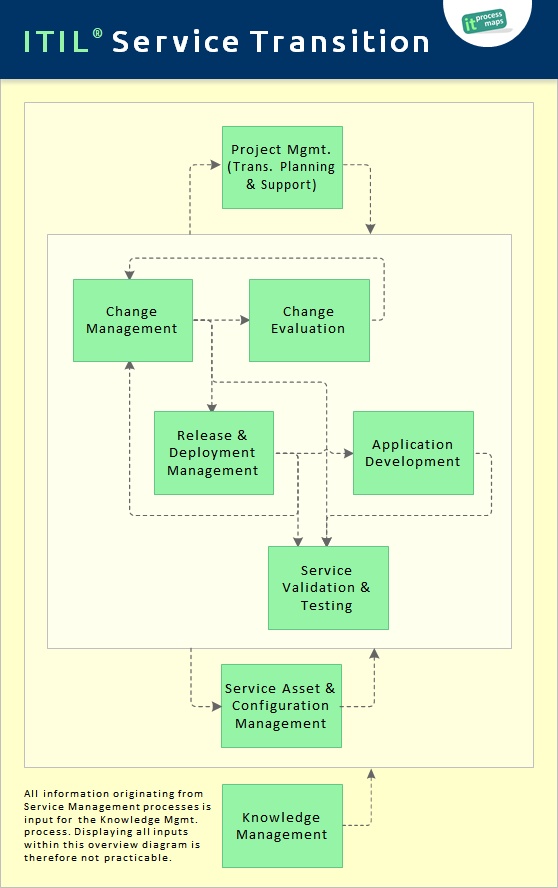ITIL Service Transition
| diese Seite auf Deutsch |
|---|
ITIL Version: ITIL Version 3 (ITIL V3)
Process Objective: To build and deploy IT services. It also makes sure that changes to services and Service Management processes are carried out in a coordinated way.
Part of: IT Service Management
Sub-Processes of Service Transition (ITIL V3)

- Change Management
- Process Objective: To control the lifecycle of all Changes. The primary objective of Change Management is to enable beneficial Changes to be made, with minimum disruption to IT services.
- Project Management (Transition Planning and Support)
- Process Objective: To plan and coordinate the resources to deploy a major Release within the predicted cost, time and quality estimates.
- Release and Deployment Management
- Process Objective: To plan, schedule and control the movement of releases to test and live environments. The primary goal of Release Management is to ensure that the integrity of the live environment is protected and that the correct components are released.
- Service Validation and Testing
- Process Objective: To ensure that deployed Releases and the resulting services meet customer expectations, and to verify that IT operations is able to support the new service.
- Application Development and Customization
- Process Objective: To make available applications and systems which provide the required functionality for IT services. This process includes the development and maintenance of custom applications as well as the customization of products from software vendors.
- Service Asset and Configuration Management
- Process Objective: To maintain information about Configuration Items required to deliver an IT service, including their relationships. This process is also responsible for tracking and reporting the value and ownership of financial assets throughout their Lifecycle.
- Knowledge Management
- Process Objective: To gather, analyze, store and share knowledge and information within an organization. The primary purpose of Knowledge Management is to improve efficiency by reducing the need to rediscover knowledge.






